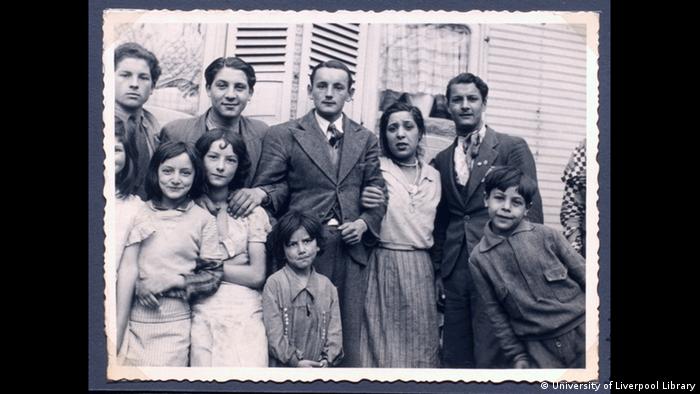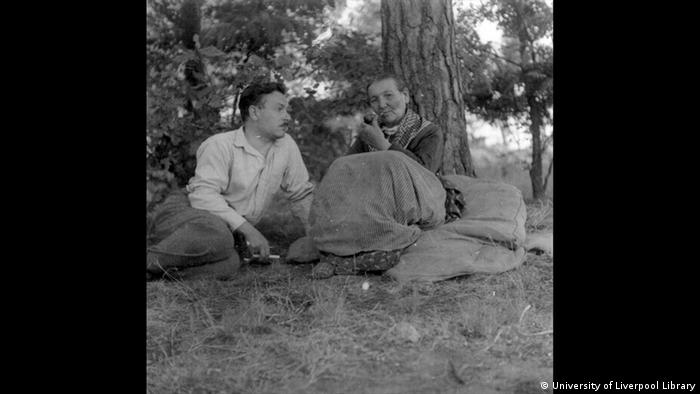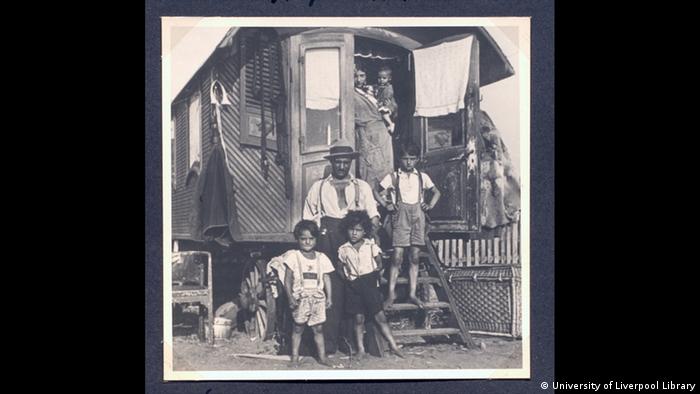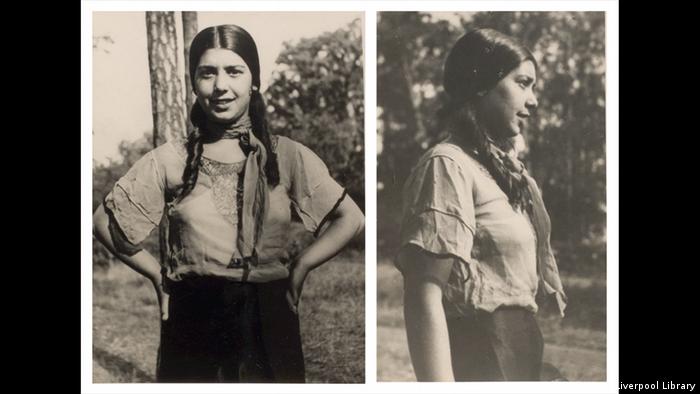In the 1930s, the photographer Hanns Weltzel from Dessau took numerous photos of Sinti and Roma. An exhibition shows the unusual imagery now – and tells of the suffering of the people depicted.

Several members of the family Laubinger / Steinbach on a photograph from 1935
If Raffaela considered Laubinger, the old photographs of your ancestors, you quickly realize how deeply they moved this sight still. The recordings were made many decades ago, but Laubinger, you have to know and since 2018. On a Holocaust memorial ceremony has come to know that there are the recordings. A big Surprise, she says, “I knew that these photos exist at all.”
Raffaela Laubinger comes from a Sinti family, which was destroyed by the national socialists almost completely. A total of 90 members, from child to grandmother, were murdered in the camps in different concentration. Her father was one of the few who survived the genocide. With the Deportation of the family almost all the personal documents and photographs, disappeared the Sintizza told. “It was taken from them all, as they were deported.”

The photo journalist Hanns Weltzel was interested in the culture of the Sinti and Roma
Hanns Weltzel – an unusual photographer
That Raffaela was able to learn Laubinger now, but still, like your grandparents, uncles and aunts looked like Jana Müller to thank for that. The employee of the city archives of Dessau-Roßlau has long been concerned with the Holocaust of the Sinti and Roma, and has tracked down the pictures in Liverpool, where most of them were after the war, in a roundabout way to get. Together with the British historian Eve rose adhesive Müller has researched the origin of the photographs and the Suffering of the people depicted. This results in a contact is created at the end of the exhibition, which is currently on display in Dresden.
The recordings have an unusual history. They come from the photo-journalist Hanns Weltzel from Roßlau, made in the 1930s, dozens of shots of Sinti and Roma. Unlike the national socialists, he did not look with contempt on these people, but was fascinated by their lives and their culture. This is reflected in his recordings: no propaganda pictures, but the photographs, the women, men and kids at eye-level show.

The family Laubinger in 1937 – to the right in the picture Raffaela Another father is
Before the Deportation the recording booth
“He was not quite free of the romanticizing of superiority thinking”, says Jana Müller. Nevertheless, Hanns Weltzel have possessed a “heart for the Sinti and Roma” and his contemporaries do not want to educate them on their prejudices votes. He often visited the Sinti and Roma in the Region of Dessau, with many a personal friendship arose. Has not protected Weltzel of his friends, however. As your Deportation begins in the concentration camp, he is silent.
Also, the deportation and the murder of the Depicted, the exhibition tells in Dresden. In addition to Weltzels images to be shown, therefore, the files that had been created by Hitler’s persecution of the authorities about you. The national socialists were also photographs of the people, but very different than Weltzel: criminal recordings for the systematic recording of all the so-called “Gypsies” – the prelude to the genocide of hundreds of thousands of Roma and Sinti.

Erna Lauenburger, called Unku, in the year 1936. She was murdered in Auschwitz.
The forgotten Holocaust of the Sinti and Roma
The work-up of this crime has been neglected for a long time. A reason for this, Jana Müller sees the fact that Roma and Sinti had neither a state nor an advocate in other countries behind: “Germany had simply no pressure.” In 1982, almost 40 years after the end of the Second world war – have been recognized by the Federal government under the then Chancellor, Helmut Schmidt, the persecution of Roma and Sinti in the Nazi-era as genocide.
To preserve the memory of the Murdered, is a Central aim of the exhibition of the historical photographs of Hanns Weltzel. The originals are preserved in an archive at the University of Liverpool – descendants as Raffaela Laubinger, however, did receive deductions. “These images are very, very valuable for me, because this is my family,” she says. “The land for me, not in the drawer in my apartment, I’ve hung quite a lot of them.”
Watch the Video 03:00
Photos against Forgetting
Facebook Twitter google+ send Tumblr VZ Xing Newsvine Digg
Permalink https://p.dw.com/p/3RHIW
Photos against Forgetting